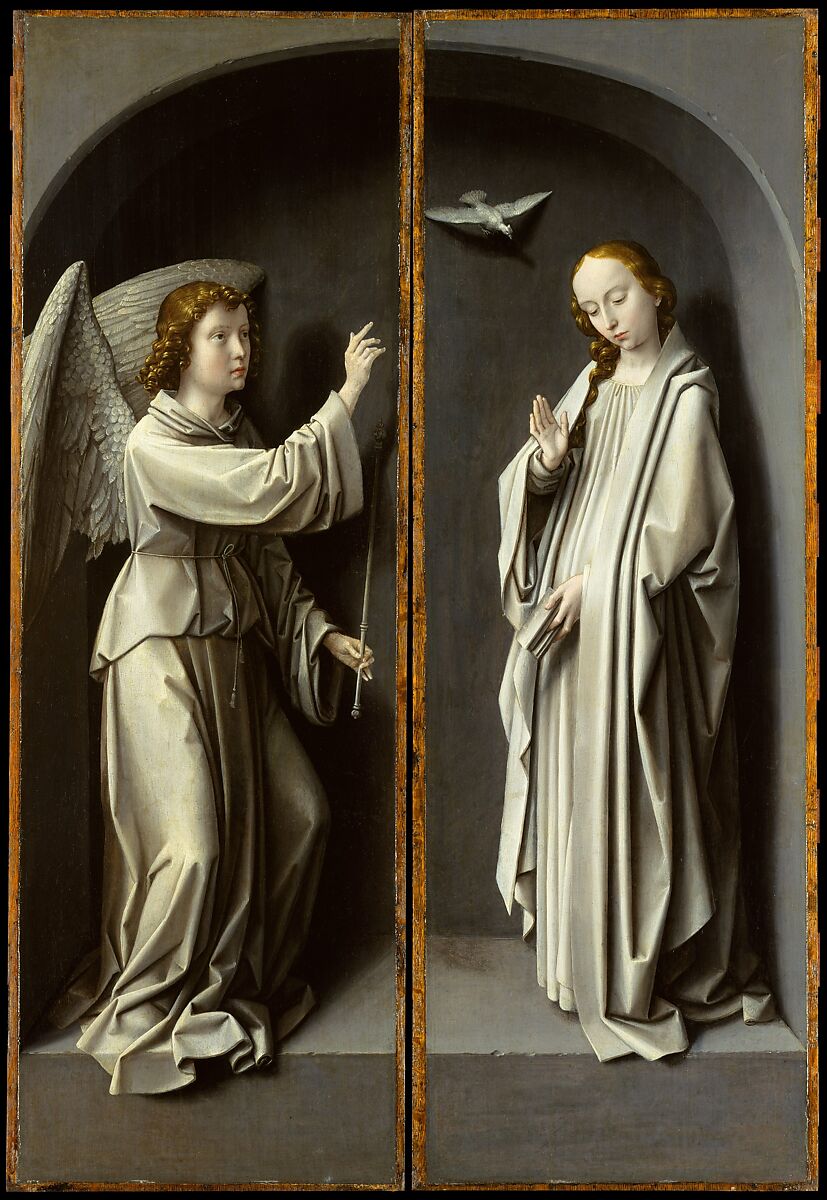Right: Gerard David, Netherlandish, Archangel Gabriel; The Virgin Annunciate, ca. 1510
For our own subject, we debated between biblical subjects we knew to have been represented and produced in the early days of Spanish occupied Mexico.
Our process was as follows: we first scanned the list of all existing feather mosaics and selected the most commonly represented examples. Saints, scenes from the Passion of Christ, the Mother and Child, the Immaculate Conception, the Gift of the Magi, and the Crucifixion were, of course, all on the list.
Of all the precedent mosaics, we felt that the ones with multiple figures within the frame were the most interesting compositions. We then narrowed it down to the Annunciation and the Crucifixion. The Crucifixion, of course, is narratively compelling and provided one of the clearest parallels to the Nahua traditions of sacrifice, purification, and renewal. On the other hand, the Annunciation as well held parallels to mother figures in the pre-Hispanic Nahua religion.
Ultimately, we went with the Annunciation for its nuance and complexity. While it has been done within the tradition of Aztec feather mosaics, it is far less common. We felt, as well, that depicting the Annunciation provided us more artistic freedom to explore the symbolism behind Mary. It also offered us the unique challenge of designing an interior space which could have realistically existed in 15th c. Flanders.
